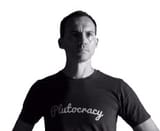News: Game over, Harun Farocki (1944 - 2014)
We lost one of the most eclectic artists of the 20th Century, German filmmaker, philosopher, and videogamer Harun Farocki. His contributions to Game Art were outstanding. I would like to remember him with Parallel (2012), a 17-minute video essay on the status of computer-animated images, and Serious Games (2009), a meditation on combat training simulators and thus war, simulation, trauma, and violence.
His Serious Games series was shown at the MoMa in NY between 2011 and 2012.
Harun Farocki, Serious Games 1: Watson is down/Serious Games 3: Immersion, 2009.Here's a video taken by a visitor: His 2007 installation, Deep Play, is probably one of the most important artworks of the 21st century. Harun Farocki, Deep Play, Multichanel-Installation, 12-channel video, 2 hours 15 min., 2007.Here is what critic and curator Diedrich Diederichsen wrote in 2007:"It is common knowledge that football is our life. And,just like life, we are always trying to improve our graspof it. The joke is that it constantly frustrates our attempts, but that’s also something we try to optimise.Harun Farocki’s work Deep Play is made up of various perspectives on the final of the 2006 World Cup. We see the “clean feed”, the television networks’ raw material. We see individual players on both teams, but also abstract computer-generated representations ofthe flow of play. The intelligent network of relationships among players who are kicking, passing, receiving the ball and running––a network that absorbs spontaneous individual decisions as well as tactical ideas and habits rooted in the culture of the game––is endlessly complex given the size of the field. This roughly corresponds to the range of possible constellations offered by a group of guppies in a mid-sized aquarium. This may be sublime, but it also makes us sad. However the game is not only classified, assessed and transferred to other systems, for example by trusted experts who analyse and evaluate all quantifiable events. We also experience the majestic calm of a summer’s day as it draws to a close above the Olympic Stadium. We hear many soundtracks, from the police radio to the words of TV production teams from all over the world, alternating between commanding, consequential speech and contemplative reflections on events. Above all, what we experience is how the laboratory of football is able to exhibit the most advanced technology in the production and presentation of moving images. All fans and followers of simulation and documentation, movies, TV and computer games start running a little warmer as they watch. We see how eerily close the wishes of the consumers, the trainers and the police really are to each other. Just as they are in real life" (Diedrich Diederichsen in: documenta 12 Catalogue, edited by Roger M. Buergel & Ruth Noack. Kassel 2007)In 2012, Daphne Dragona interviewed Farocki for Neural
magazine. Below is an excerpt:
Neural: Are you also interested in the positive aspects of video games?LINK
[HF] Well, yes. I would not want to be judgmental. The problem is that there is a great contradiction between video games and real life. In real life we have no agency; we can’t control everything. In video games suddenly you are the master of the universe. They bring back a brutal vitality where your life is based on competition, vital competition.
On the other hand of course it is interesting that in video games you can also navigate in different ways, allowing you to look into details. It is not like in a film where you have to watch a main story and have to identify with the main hero.
Maybe I should to clarify that it is the computer-animated images that interest me, rather than games. These images are on the verge of becoming the standard, making images based on photography begin to look anachronistic. Because computer-generated ones are not just a copy of the world – they are a new creation of the world." (Neural)
